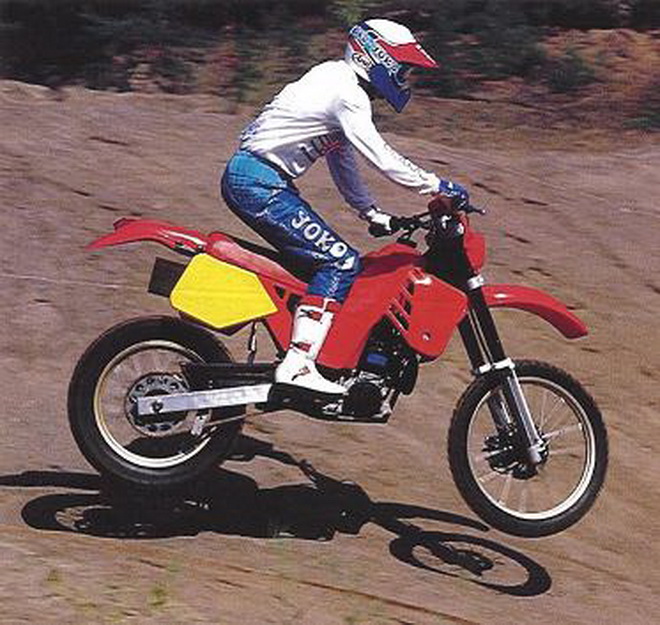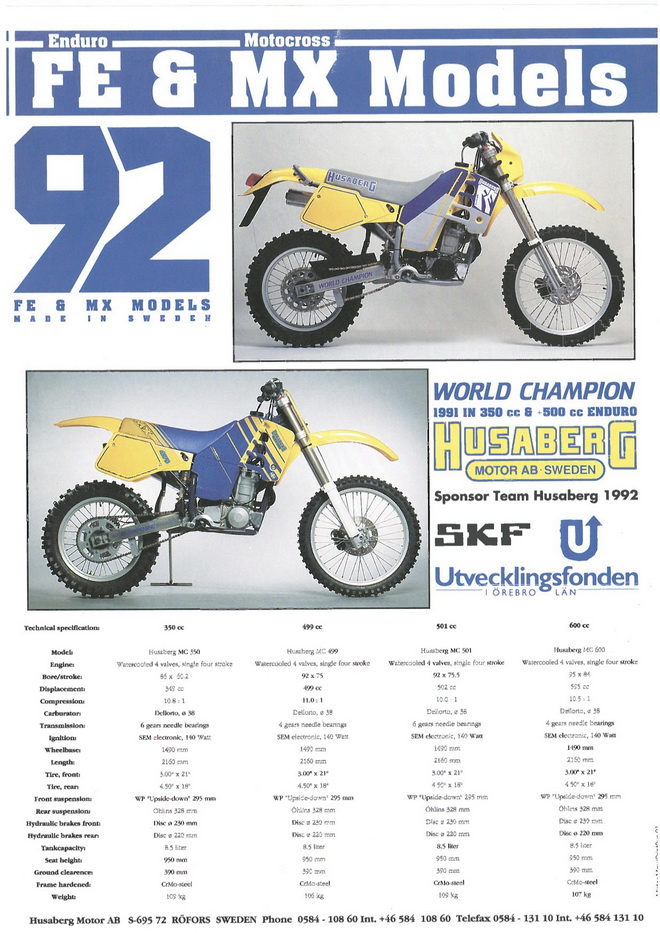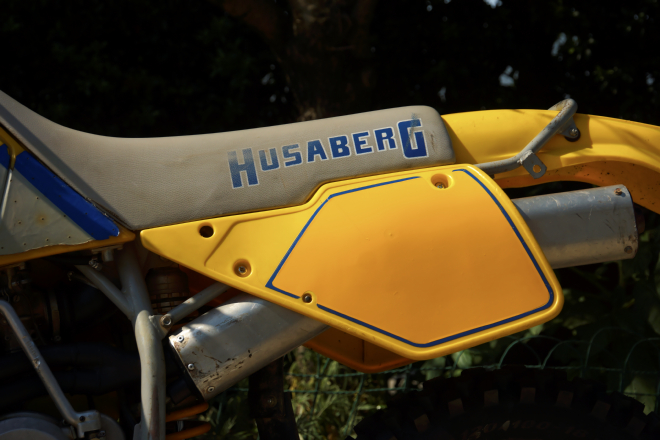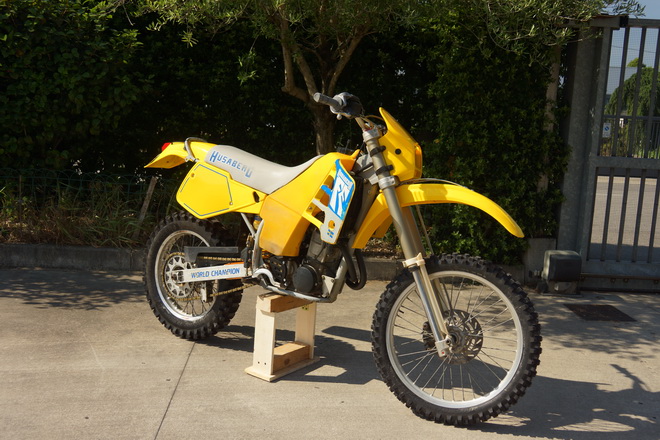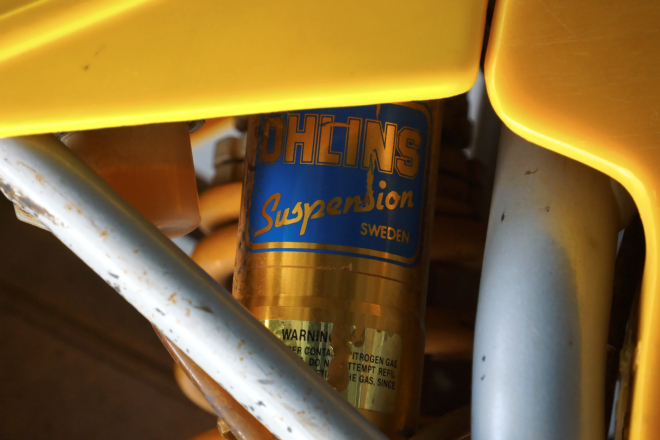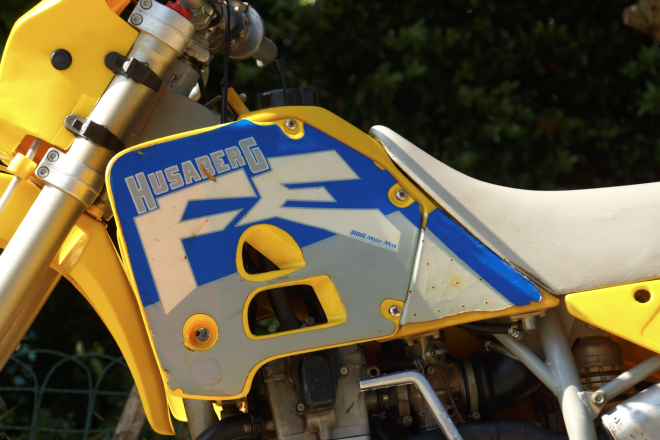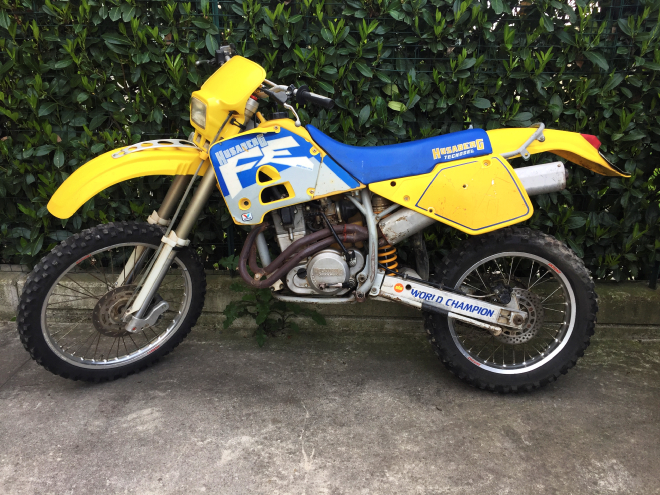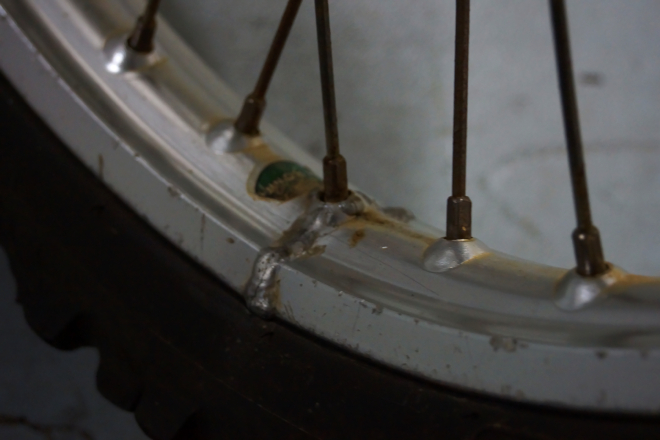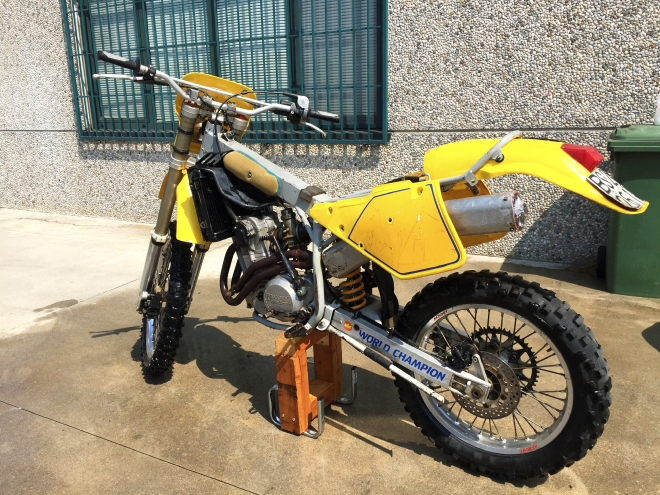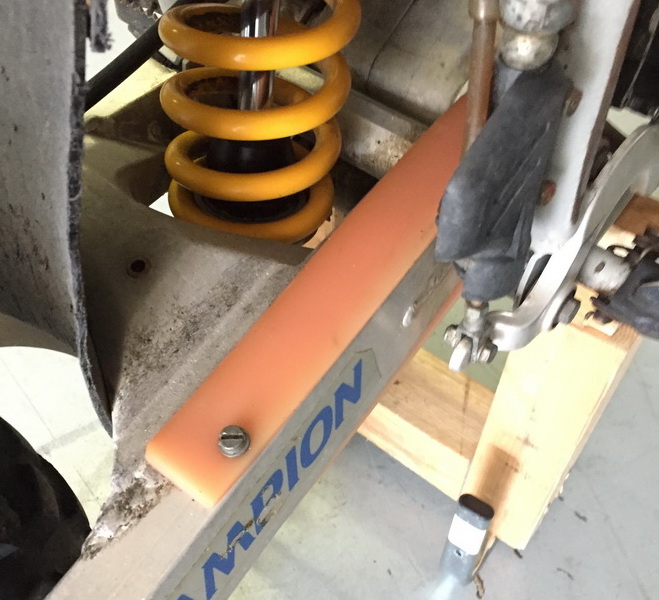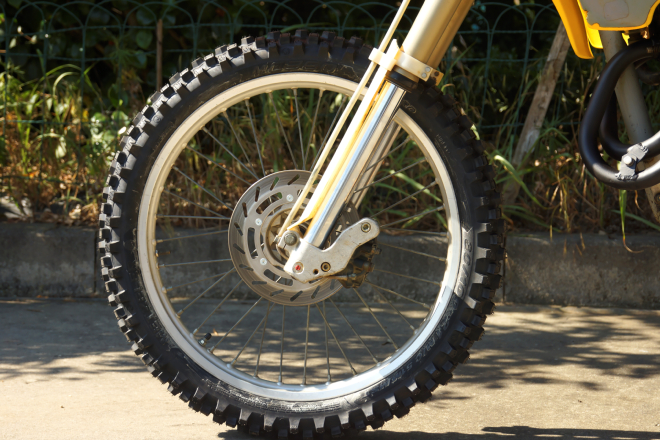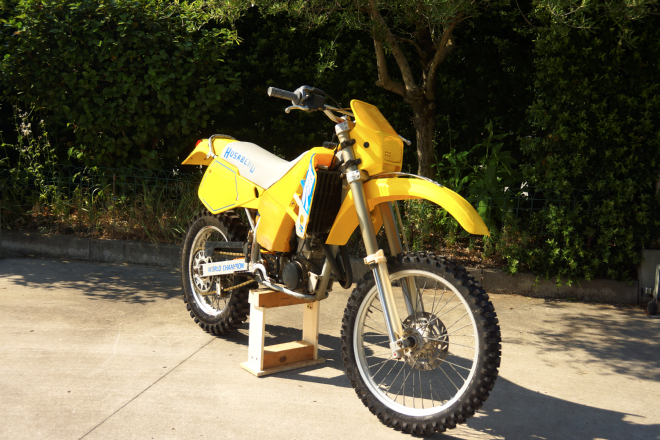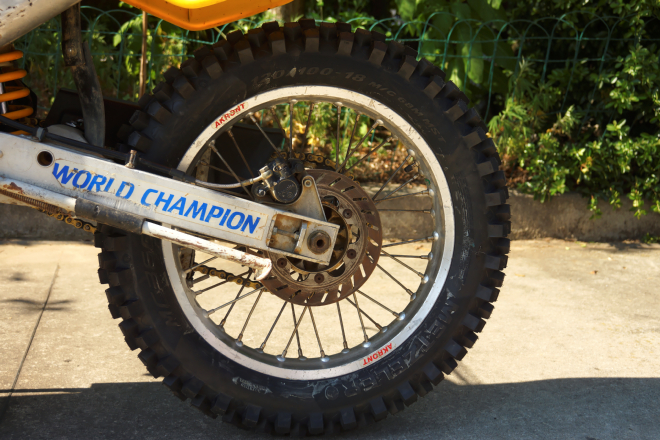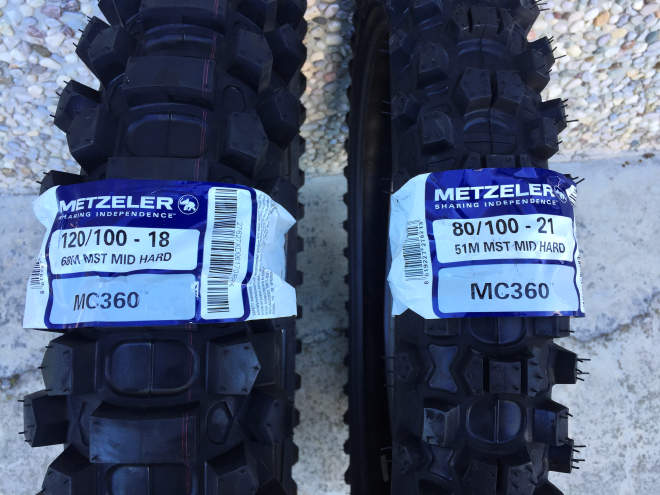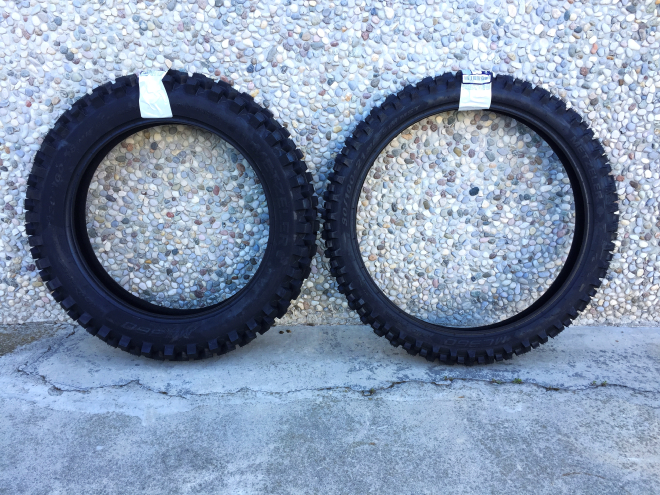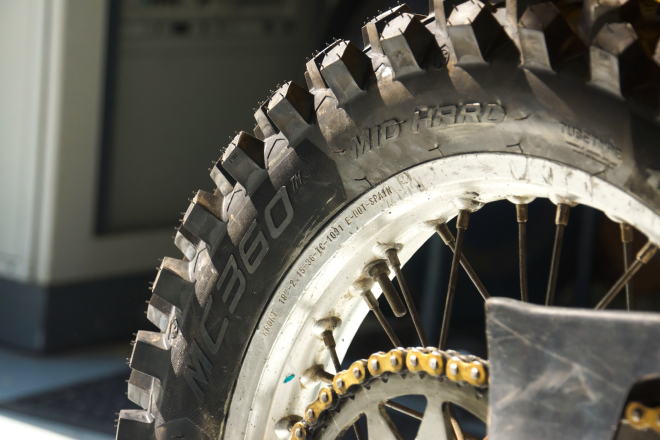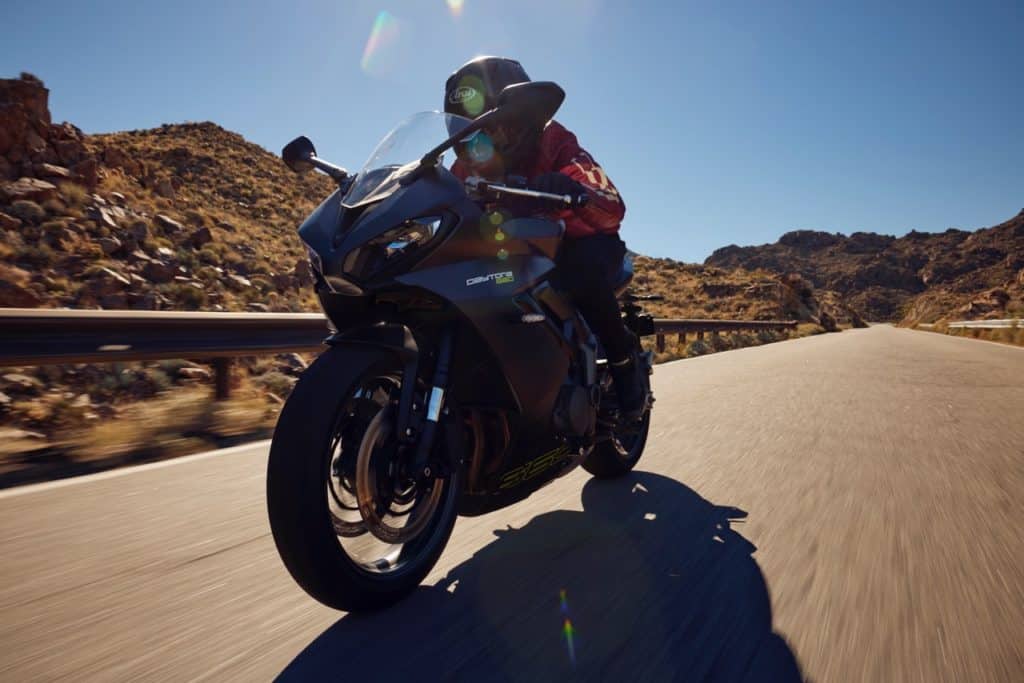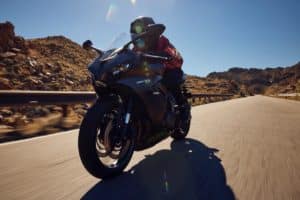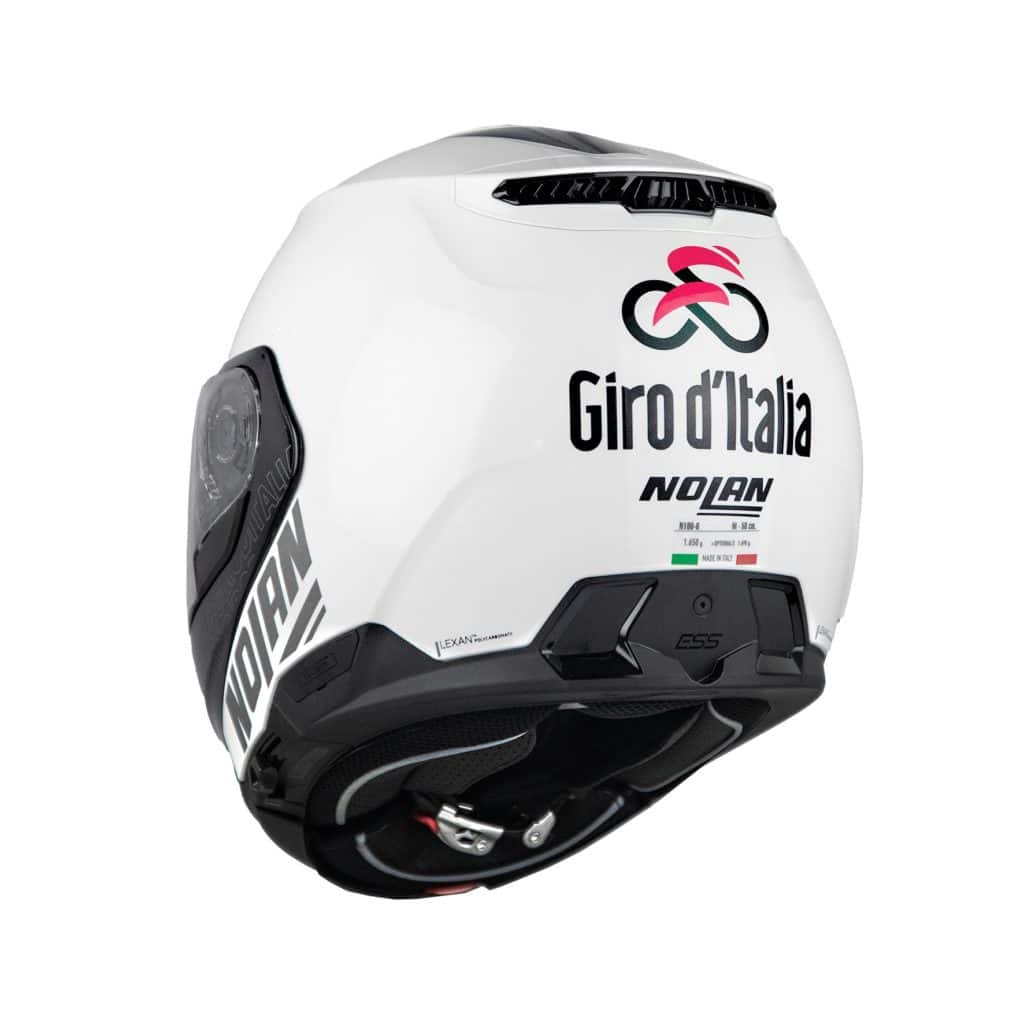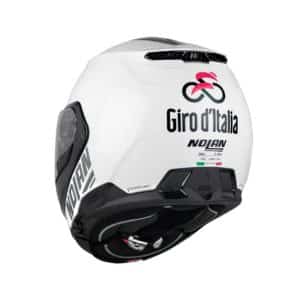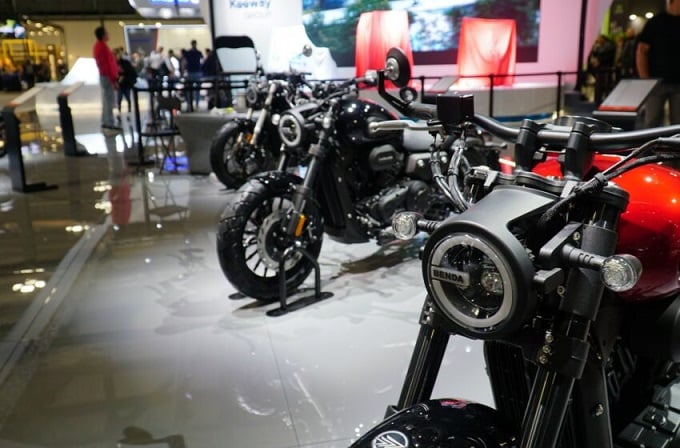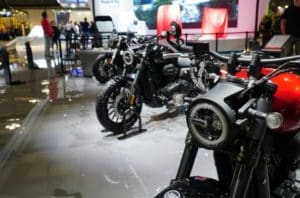Husaberg FE 350, the charm of vintage Enduro
An excellently preserved example from the 90s, on which we "re-did the make-up"
The events related to the brands that revolve around Husaberg are perhaps not the best known to the general public. So let's take advantage of this half-madness of ours, the purchase of a motorbike that we didn't need, but which was too fascinating not to put it in the garage, to try to tell you a bit of history of the last 30 years or so.
At the end of the 80s, another motorcycle manufacturing company left Sweden, but not only that
The year was 1987 ed in Sweden a historic brand had just left, acquired by the Cagiva Group. That Husqvarna which, founded in 1689 as an arms factory, diversified its activities into various sectors over the years, including the production of bicycles in 1896, followed by that of motorcycles from 1903, but also that of garden equipment in 1918 and from that of chainsaws in 1959. Husqvarna AB is still the second largest producer of chainsaws in the world, while weapons have no longer been produced since the end of the 80s. At the time the various Husqvarna factories were owned by the Electrolux group, which also decided to sell the motorcycle division to Cagiva. After the Italian acquisition, the activities continued, with sporting successes, both in Cross and Enduro, arriving until 2007, when it was sold to BMW. However, the acquisition by the German company came just before a dark period for two wheels, which is why, after 6 years of ups and downs, in 2013 Husqvarna was taken over by KTM, which also decided to close the Biandronno production site, in the Varese area, which BMW had maintained during the period of its ownership. Today, those 200 employees are partly involved in the rebirth of the SWM brand, but that's another story.
One who goes, one who comes
Returning to Husaberg, saw the light in 1988, thanks to the initiative of a group of Scandinavian engineers, not by chance former Husqvarna employees. They founded the new brand, focusing on 4-stroke engines, when in competitions practically only those with 2 were seen. Later, to underline this choice the slogan "4 Stroke Force”, which rewards the passion for Enduro riding with motorbikes equipped with engines of this type.
Already in 1988 the first prototype arrived, a red "501 ENDURO", from which the first pre-series examples were born the following year FE 501 with the historic colors blue and yellow, vehicles intended for competitions and for some wealthy enduro enthusiasts. FE stands for Four stroke – Enduro, acronyms that will be carried forward to the present day (even if now with another brand, as we will see), with the FC Four stroke – Cross which will then be joined by TE and TC for the 2 strokes (Two stroke ). In 1990 a first series of "our" FE 350 debuted, while in Italy the Vertemati brothers, among the first to believe in the Swedish project and official importers of the brand since 1989, participate in various championships, giving rise to HIC team (Husaberg Italia Corse). They are active both in Enduro and in Motocross races (Italian Cup), with a Walter Bartolini super competitive, but not very lucky. Let us remember that, until 1989, only the European enduro championship existed. Husabergjust in his debut year in the world of racing, he immediately wins in his category with the 501. From the following year, when the Enduro championship became World, the 501 dominated again, again led by the very strong Eriksson. The small Swedish factory proves it knows what it's doing and achieves success, ahead of giants like KTM, Husqvarna and the various Japanese ones, who fare better in the other 2-stroke motorcycle classes. In 1991 the world success was consolidated in two classes with the 350 and the 500, with riders of the caliber of Karlsson and Katrinak respectively. It should be underlined that the latter won the title as official driver of the "local" Vertemati team, made up of only 2 brothers from Brianza and a technical assistant! In parallel, production continues, always with small numbers, we are talking about sales volumes which went from around a hundred units in the first year to around 300 in the following years, while in 1992 the FC 499 and FC 600 arrived from Cross, also taking advantage of the experience accumulated in the competition by the Vertemati. In 1993 the small HIC team, with a Husaberg 530 MX prototype and with a novice Joel Smets, came third in the 500 class Motocross World Championship, while it was the lucky Husqvarna 610 TC of Martens that brought a motorcycle to overall victory. 4-stroke, after over 30 years of supremacy of 2-stroke motorcycles.
An example of the 350 edition Husaberg FE 1993
The colors change, so the FE350 we bought, which is a 1992 example, has plastics that are no longer blue but yellow, while the stickers and saddle are blue and grey. Technical evolution is continuous, the result of a policy that is devoted above all to competitions, where one can never remain idle. Just to give you an idea, the bike we bought was rated at 1992 horsepower in 40. A 350 cc engine today can hardly reach these values, after 25 years!
The consecration and acquisition by KTM arrive
The FE94 arrives in '600, which joins the 501 and 350 for the Enduro range, while the Cross FCs are available in the 600 and 501 “MX” displacements. 1995 is perhaps the year of Husaberg's definitive consecration, but also that of the beginning of that process which will see it gradually become something different. Indeed, it arrives the first of Joël Smets' 3 World titles ('95-'97-'98) in the MX 500, the successes also continue in the Enduro, but above all ownership is sold to KTM. Initially the thing brings fresh capital and the possibility of growing consistently. Production remains in Sweden as does research and development management, headed by its leader Tomas Gustafsson. The range was completed in 1996 with the arrival of the 400 and thus there were 8 models available, 12 if we add the versions of the FE dated electric ignition. In fact, we have 350, 400, 501 and 600 all available in both FE and FC versions. In 1997 the 350 disappeared.
However, Husaberg is no longer the small Swedish factory of the very early years, in fact it is starting to become "a piece" of KTM, gradually we come to deny the slogan that links it to the philosophy of 4-stroke Enduro and the 2-stroke range also debuts, until the brand disappeared, or perhaps to its freezing (we hope to see Husaberg branded motorbikes again in the future). Why? Here we must return to our parenthesis dedicated to Husqvarna to close the circle. After KTM's purchase of the brand from BMW, it was in fact considered that the two houses, both originally Swedish and one born from a rib of the other, could have been "unified", putting aside one brand and immediately using the best-known one to "rebrand" the Husabergs into Husqvarna, starting from 2014.
A brand, as we hope to have made you understand with this short story of ours, full of charm, to the point that often at markets or fairs, when we come across a Husaberg with that famous yellow and blue colour, we always stop to admire it and observe it. It then happens that a friend, owner of a good number of motorcycles from the Swedish company, Please let us know of an example of FE 350 for sale. It is well preserved, a motorcycle with a simple history and few changes of ownership. Bought new in 1992, sold only once 2 years later. Almost all with original parts and complete, as well as perfectly working. The writer is not an off-roader and I wasn't looking for anything similar, but the desire to see it in the box and to fix some of the details is such that the trip to buy it is already organized, a few minutes after making a phone call to find out some more details and negotiate the final price. The motorbike is less than a hundred kilometers away, we leave with the van, a few minutes to feel it turned on and check that everything is more or less in order, a stop at the agency for the transfer of ownership and it's mine.
The bike we bought, just to give you some references and discover some details, is the same 350 that won the enduro world championship in '91, with a simple aesthetic restyling. The 350 and the 501 are twins, with the exception of the engine, they focus everything on lightness and performance, given that they were created for racing. 109 kg of total weight, with an upper single-spar frame with a lower single-cradle, split under the engine, which is one of the keys to competitive success. AND simple and light, but at the same time very rigid thanks to the chrome-molybdenum steel construction, Combined with a very refined chassis. At the front we find a WP upside down fork with 295 mm of travel, while behind it shows off a prestigious Swedish mono (it couldn't be otherwise), a Ohlins which allows the wheel an excursion of 328 mm.
For the brakes he instead relies on the Italian Brembo, with 230 discs at the front and 220 at the rear. Even then, the centrality of the masses was important and the FE350 is entirely concentrated around the engine area, you can tell just by looking at it. The 4-stroke engine it is also rich in technology forefront, with highly respectable performances still today. It weighs only 29 kg, it's a liquid-cooled single-cylinder, single-cam 4-valve, powered by a 38 Dell'Orto carburettor, that with MY1992 it became a flat valve type, instead of the traditional cylindrical valve. This is the only important innovation compared to the previous year's model, from which it differs mainly in terms of colors and aesthetics. The performances speak for themselves 40 horsepower delivered at 8.200 rpm, with the 6-speed gearbox capable of allowing it to reach up to 130 km/h. The price of the smallest of the "Husbys" was around 9 million lire.
Well preserved, but in need of some attention
Compulsive buying, some of you will know well, affects women for shopping, men (or at least some of them) for more or less useless 2 and 4 wheel objects. I no longer count the vehicles I've bought (and sold) over the last 25 years or so, ever since I've driven anything with an engine. You don't necessarily need to be rich or wealthy to do it, for some it becomes a hobby with which you can even earn something, more often you spend time, work and a little money on it, but almost never too much. Above all, a lot of passion is needed, because there are very pleasant aspects, but a lot of patience is needed to digest and manage those that are less pleasant. Staying on foot can be part of the game, for example when you get on a motorbike that has not been running for some time, and only by warming up properly does it bring out some hidden "magnet". Returning to our latest purchase, once the damage has been "done", when we arrive home we begin to analyze the conditions and necessary interventions more calmly and rationally. Luckily for us the FE 350 just needs some attention, but is really well preserved for being 25 years old.
The FE 350 before replacing the seat with a non-original cover
The only real problem, but still not a huge one, is the front rim with the welded channel, which will certainly need to be replaced.
The work therefore begins in two directions, the first practical and more operational, with a due service, oil change, filters and so on, without forgetting a good clean of the carburettor and a thorough wash of the bike itself.
On the other front, the search for some spare parts, possibly used to save some money, was done on the web. Not everything can be found, like the chain slider that we will make from a Vulcolan sheet of the right thickness.
We are lucky enough to find a Swedish used spare parts site, where we find quite a bit of what we need, especially a preserved original saddle, to replace ours, which was covered in a non-original color and ruined. Everything proceeds, between the painting of the exhaust manifold, previously sandblasted and general maintenance and restoration operations, for example that of the stickers without their replacement (they are unobtainable).
We also replace the headlight, putting an original one back with the yellow plastic "shutter", to be used to protect it from stones. We left the front rim for last, which will in fact be the biggest expense. In the end we find one for sale in Germany, complete with tire and brake disc which we will dismantle later.
It's perfect and it's the last touch, before fitting the new tyres, to conclude a job that we wouldn't define as a restoration, even if conservative, but more like having redone the make-up of a motorbike that was already in order and complete.
Registration in the Historical Register concludes our project
The last piece that remains to be inserted in our beautiful puzzle is the registration in a historical register, useful both for saving something, with theexemption from ownership tax and access to discounted rates for the insurance policy, as well as benefiting the valuation of the motorbike, increasing its economic valuation. A good investment which, now that our Husaberg FE 350 presents itself as it should, is almost a formality.
Just take a few shots and send the application together with the scanned documents, it's all done from a PC and you just need to have previously joined the IMF, which can also be done online. The total expense is far from prohibitive and only a few weeks of time is needed for verification by the examiner. In fact, punctually, we first receive the confirmation via email, then the paper certificate at home.
Now that we are done with our project all that remains is to figure out what to do with our beautiful Husaberg. It could participate in a regularity race for the "historic" ones, or simply become an object to be enjoyed and turned on every now and then. Since it has license plates, you could also travel on the road, but that's not really its most suitable habitat. Everyone has their own reasoning, the fact that I have a 1957 Lambretta in my living room is an important clue to understand that not all of us do it with the same logic.
Two new shoes for our Husaberg FE 350: the brand new Metzler MC360
The friends at Metzeler supported us in our project, providing us with two magnificent MC360s, among the very few approved for road use and available in sizes that have now almost disappeared. This is a new product, which debuted just a few months ago, dedicated to off-roading, available in two versions: the MID HARD we use (https://www.metzeler.com/site/it/products/tyres-catalogue/ mc360-mid-hard.html) and the MID SOFT dedicated mainly to softer surfaces and sand (https://www.metzeler.com/site/it/products/tyres-catalogue/mc360-mid-soft.html) , each of which in 6 sizes, a 21" front (80/100) and 5 rear sizes (3 18" and 2 19" sizes).
They provide a high level of dynamic performance on different types of terrain, maximizing grip and traction when cornering, as well as notable durability and resistance to cuts and tears. All MC360 fitments have been tested to ensure simple and intuitive use, allowing pilots to express their maximum potential while having fun. The consistency of performance and exceptional durability ensured by MC360 is further enhanced by the reversibility of its tread pattern: the new tyres, in fact, can be used in both directions and the user can reverse the direction of rotation to restore - usually around halfway through the life of the tire – the attack angles of the blocks if too blunted by intensive use or aggressive terrain.
MC360 is a tire suitable for the most extreme uses and, at the same time, approved for road circulation, in such a way as to allow the amateur motorcyclist, owner of an equally registered and approved vehicle, to go to and from the race or training field by driving regularly on the road. The structure of the Metzeler MC360 is made up of three high modulus, low compliance polyethylene terephthalate (PET) plies, which guarantee high impact resistance. In the Mid-Hard specification we find the exclusive CKB (Continuous Knob Binding) technology, which thanks to a double bevel at the bottom of the tread groove improves the tear resistance and wear of the blocks, the latter arranged in five rows for both the 'front and rear. This tread is equipped with large blocks to increase the solid/void ratio compared to the Mid-soft specification, in order to ensure an adequate footprint for maximum grip and improve the life of the tire. A tire capable of providing an excellent balance between rigidity and elasticity, with the elasticity necessary to cushion stress due to potholes, roots, rocks and jumps, while rigidity is necessary in order to resist fatigue and deformations during the damping of the impacts. As for performance, they guarantee the specific rigidity of the front and rear blocks in Motocross, in both specifications, providing high dynamic performance. Maximum resistance to stress overheating, capable of providing constant performance throughout the race or training session. In Enduro, however, they are resistant to wear, tear, cuts and punctures resulting from METZELER's experience in competitions.
if you want to always be updated on our news
Follow us here





















